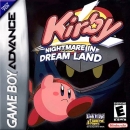The Wii U had Super Mario 3D World, Pikmin 3, The Wonderful 101, Bayonetta 2 (before it came to Switch), Zelda: Wind Waker HD, Twilight Princess HD, Star Fox Zero (say what you want about it), Star Fox Guard (again, same as Zero), Yoshi's Woolly World (before it released on 3DS), Captain Toad Treasure Tracker (before it came to 3DS and Switch), Nintendo Land, Splatoon, Xenoblade Chronicles X, Paper Mario Color Splash, Super Mario Maker, Kirby and the Rainbow Curse, Donkey Kong Country: Tropical Freeze (before it came to Switch), Hyrule Warriors (before it came to Switch), Pokken Tournament (before it came to Switch), and Tokyo Mirage Sessions #FE,
That's a pretty good amount of games from 2012-16, even if a good amount of these games are no longer exclusive. Hell, I think Tokyo Mirage Sessions (the Atlus, Nintendo, and Intelligent Systems collab) should definitely get a second chance of life as it was just sent out to die in 2016 when the Wii U was at its lowest point.
Unfortunately, exclusives, no matter how good they are, won't be able to carry a console, especially if there are negatives that bury the console's potential. Even the Vita suffered that fate. Yes, it doesn't have the AAA exclusives from Sony that the Wii U had with Nintendo, but it had pretty good indie/Japanese support. Nevertheless, the pricing of the console + the weird deal with AT&T for the 3G Vita, the pricing of the memory cards, the dwindling AA-AAA third party support not too long after launch, and the rise of mobile gaming severely affected the Vita's life. For the Wii U, the confusing branding, the lack of marketing, the lack of third party support post-launch, the Nintendo exclusives releasing too late when the Wii U needed them, and the popularity of the PS4 took away the Wii U's headstart and the console did not gain much traction after.
Existing User Log In
New User Registration
Register for a free account to gain full access to the VGChartz Network and join our thriving community.




















